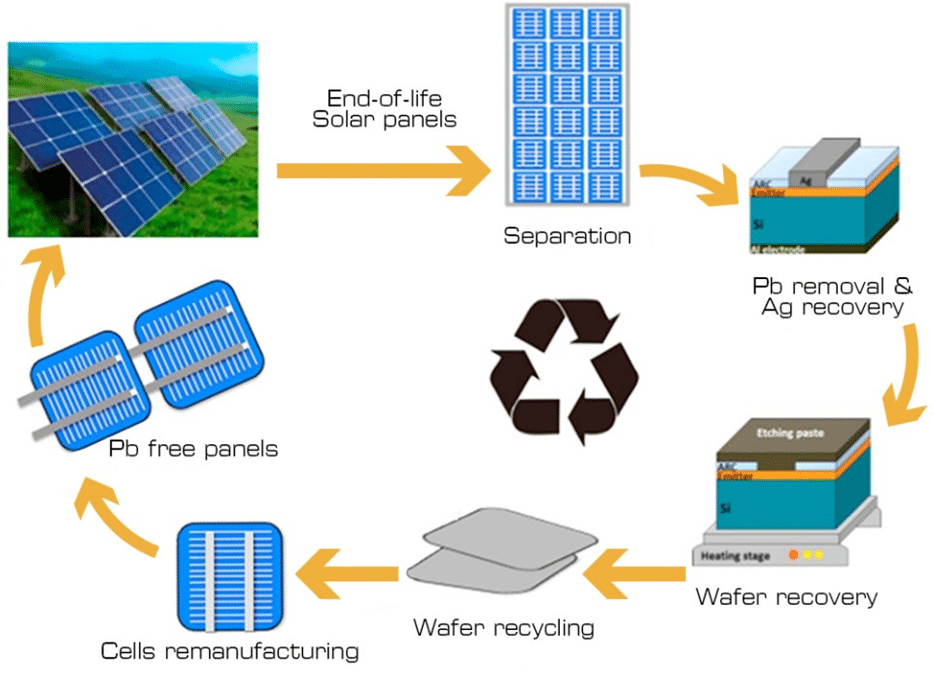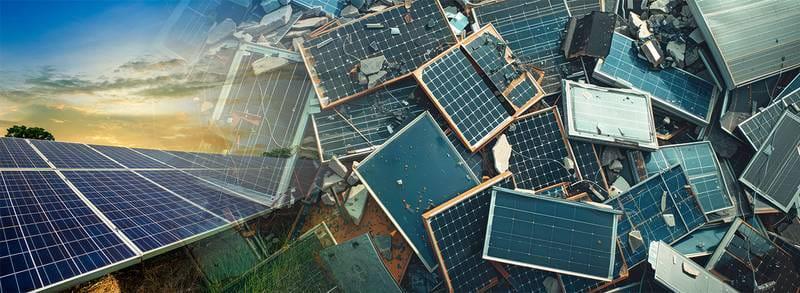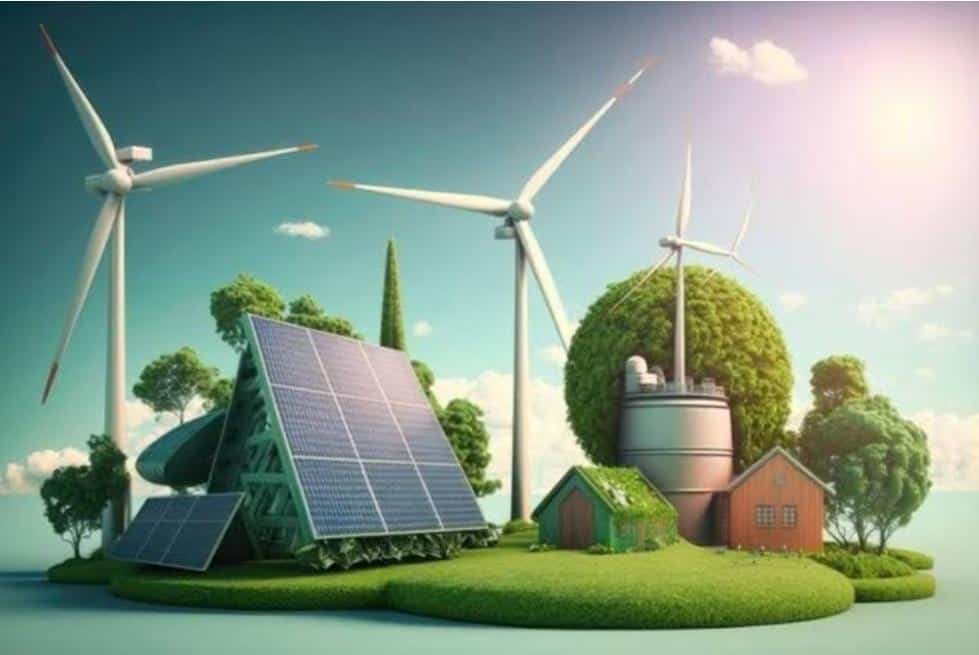Is sustainability being overshadowed by waste? Solar power is rapidly expanding, but so are its components, being sent to the dump. Can recycling keep pace with this swift growth?
As sustainability becomes a key alternative, the adoption of solar energy has witnessed remarkable growth over the past decade. Falling prices of photovoltaic (PV) panels, along with technological advancements, have made solar power increasingly accessible and cost-effective. This widespread deployment contributes significantly to renewable energy targets. However, as solar panel installations surge globally, concerns arise about the management and disposal of panel waste. Solar panels, with a lifespan of 25 to 30 years, eventually reach the end of their operational life, presenting an environmental challenge due to the hazardous materials they contain, such as lead, cadmium, and other toxic substances.
With the industry’s current growth, the volume of solar panel waste is expected to increase substantially in the coming decades. According to the International Renewable Energy Agency (IRENA), by 2050, global solar panel waste could reach 78 million metric tons—equivalent to the weight of over 20,000 fully loaded Boeing 747 jumbo jets.

Recycling as a solution
Effective recycling strategies are crucial in addressing the challenge of solar panel waste. Currently, most solar panels are not recycled due to insufficient infrastructure, inadequate collection systems, and limited economic incentives. However, with rising concerns about sustainability, efforts to develop comprehensive recycling systems are gaining momentum.
The process
Solar panel recycling begins with the removal of the glass cover and the separation of components like silicon-based PV cells, metal frames, and plastic materials. These components are then treated to extract valuable materials such as silicon, silver, aluminium, and copper, which can be reused in new panel production or other industries.
Innovations In recycling
Researchers and entrepreneurs are exploring advanced techniques like automation and robotic systems to improve the efficiency of the disassembly process. Additionally, chemical recycling methods are evolving, making it easier to recover materials that were previously difficult to recycle.

The importance of policy and industry collaboration
To manage solar panel waste effectively, collaboration between governments, the solar industry, and recycling companies is essential. Governments should prioritise regulatory frameworks that encourage responsible disposal and support recycling infrastructure development. Financial incentives and extended producer responsibility programs can also encourage manufacturers to design panels with recyclability in mind.

Solar e-waste: a growing concern
Solar energy is a renewable, clean, and sustainable source of power, offering benefits such as reducing greenhouse gas emissions, lowering energy costs, and fostering energy independence. However, solar installations, which include panels, cabling, and inverters, create significant waste streams over time.
Photovoltaic modules, commonly referred to as solar panels, typically have a lifespan of 28 to 30 years. Other components, like wiring and inverters, also contribute to waste. As the solar energy industry continues to expand, these components will collectively generate a substantial amount of e-waste.
India, for example, is projected to generate around 600,000 tonnes of solar waste by 2030, with the figure expected to triple by 2050. Most of this waste will come from solar-rich states like Rajasthan, Gujarat, Karnataka, Andhra Pradesh, and Tamil Nadu.

Recycling challenges and environmental concerns
Recycling solar panels is both complex and costly. The current recycling infrastructure is still in its early stages, and the cost of recycling often exceeds that of producing new panels. Moreover, the recycling process can be energy-intensive and may generate secondary waste. Panels contain hazardous materials, including lead, cadmium, and selenium, which can contaminate soil and water if not disposed of properly. Improper disposal poses risks to human health and the environment and can result in significant economic losses.

Waste management and economic implications
By 2030, India is expected to produce 250,000 metric tonnes of solar panel waste, with this figure potentially reaching two million metric tonnes by 2050. The lack of adequate recycling infrastructure and clear regulations exacerbates this challenge. Improper disposal can lead to environmental pollution and health risks, while the loss of valuable materials like silver and copper from unrecycled panels can limit new economic opportunities.
While solar energy offers numerous benefits, its waste management challenges cannot be overlooked. The improper handling of e-waste could overshadow the environmental benefits of solar power.

The reality of solar e-waste
As the solar industry grows, so does the challenge of managing solar e-waste. Recycling rates remain low, and only a small percentage of solar waste is processed properly. The rapid increase in installations continues to outpace recycling efforts, making the issue more urgent. Furthermore, enforcing e-waste regulations globally is difficult due to varying standards in different regions. The lack of infrastructure to collect, sort, and recycle solar waste adds to the complexity.
Addressing these challenges will require coordinated efforts between governments, industries, and communities. Only through effective collaboration and investment in recycling infrastructure can we ensure that the environmental benefits of solar energy are not undermined by the growing problem of e-waste.
Authored By: N.S. Gorhe. The author holds a bachelor’s degree in electrical engineering and currently serves as a lecturer at K.K. Wagh Polytechnic in Nashik, Maharashtra, India.









